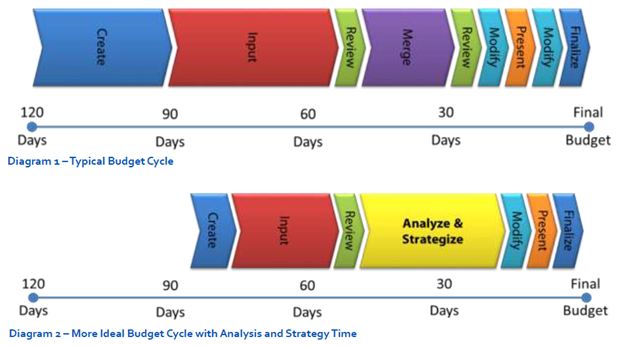3 Essential Elements of a Budget
A successful budget must bring together three major pillars – people, data and process. Gaps in any of these areas will decrease the accuracy of the final budget numbers.
The People
This element is pretty self-explanatory – you cannot create a budget without the people! You should always consider the following 3 components in regards to your business budget planning, and the people responsible for your budget:
- Involvement: The more engaged the people are, the better the end product will be.
- Accountability: If people are never held accountable for the numbers they provide, you will find that in the end no real thought or effort goes into the numbers.
- Time: You have to give people enough time if you want a quality budget. You do this by either increasing the time it takes to submit the budget or by reducing their other tasks during the budget cycle.

The Data
These are the raw numbers that you create through the business budgeting process. Make sure to consider the following:
- Detail: It is easy to give details in your spreadsheet, but sometimes it can be too much! Consequently, it becomes a tedious task to drill back down. Your goal should be to capture as much detail as possible!
- Drivers: What most people budget is revenue, however revenue is driven by your sales price and the quantity sold, each of which are in turn driven by other factors. Budgeting the drivers and then doing the math is the first step in turning data into information.
- External Information: This is any outside information such as economic trends and regulatory rules that might be useful during the budget cycle.
- Timeliness: How up-to-date is your data? Data needs to be timely in order to be useful.
The Process
And finally, you must always bring your people and data together with a process that incorporates the following components:
- Accessibility: This relates to how easily the people involved in the budget process can access the system, data, and components they need to do their job. The more difficult you make it for the user, the worse the end product will be.
- Security: You need to walk a fine line between providing the data the users need to do their job while not providing too much confidential data that can cause issues if disseminated widely or publically.
- Visibility: Make sure that the people have proper visibility in order for them to actively participate and ensure that the process runs smoothly.
- Confidence: A lack of confidence in the numbers will undermine the budgeting process.
- Duration: The ideal budgeting process needs to move quickly enough so that by the time you are finished, you can actually use the data collected to make timely business decisions.
- Frequently: The more frequent you can budget, the more accurate and useful your numbers will be to make quick business decisions.
End Goal
The key concept of creating an ideal budget cycle is not only to shorten the budget cycle, but to also give yourself more time for analysis and strategy.





